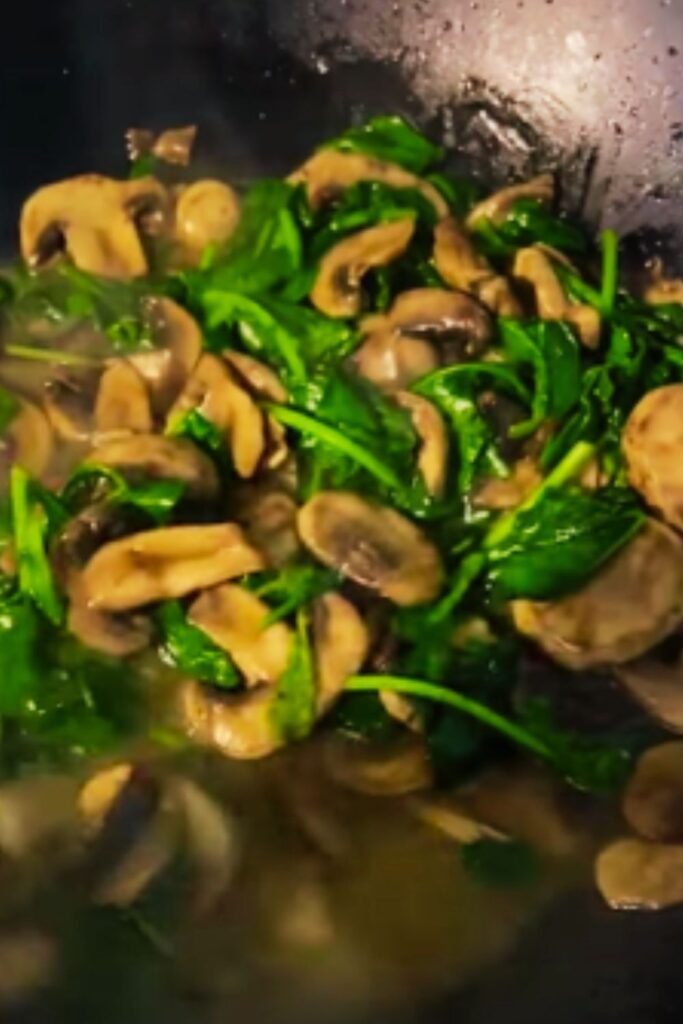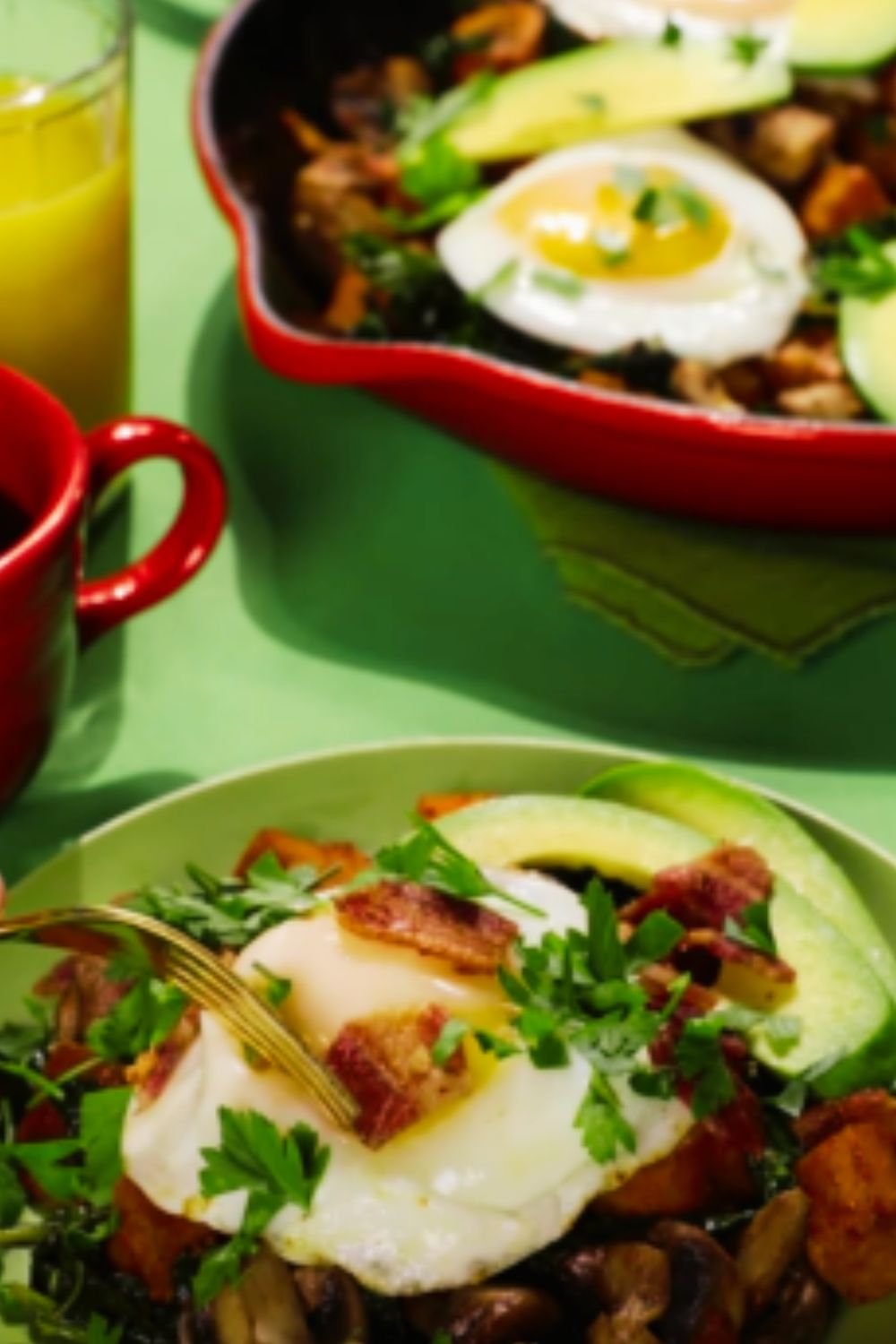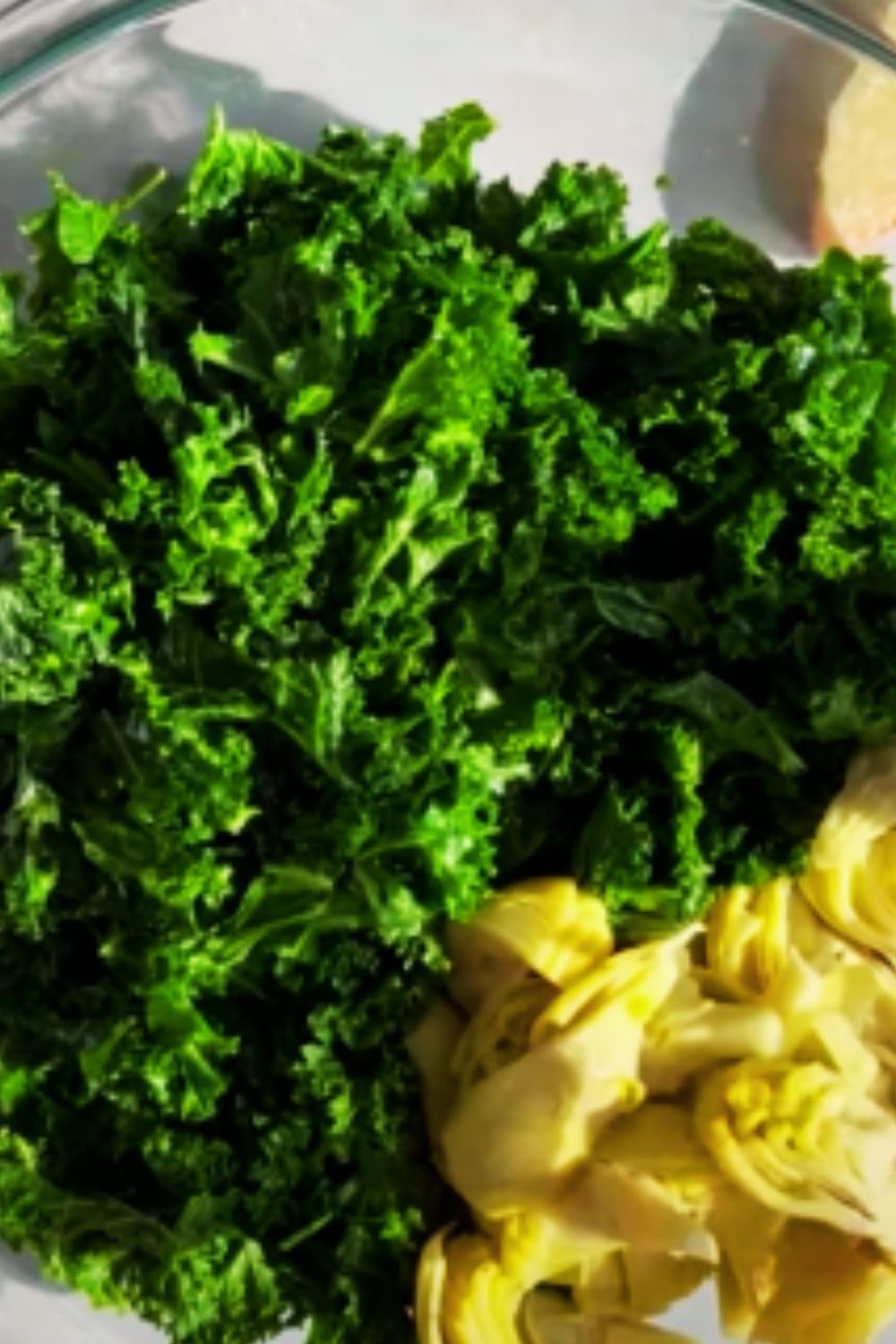There’s something deeply satisfying about a plate of tender, flavorful greens paired with earthy mushrooms. This smothered kale and baby bella mushroom recipe has become my go-to comfort meal when I want something nutritious yet indulgent. The way the kale wilts down and absorbs all those savory flavors while the mushrooms add their meaty texture creates a dish that’s both humble and extraordinary.
Why I Love This Dish
I discovered this combination during one particularly cold winter when my CSA box arrived overflowing with kale. After trying various preparations, this smothered version emerged as the clear winner. The slow cooking process transforms the sometimes tough kale into silky, tender greens, while the mushrooms provide that umami depth that makes you forget you’re eating something incredibly healthy.
What makes this dish special is its versatility. I’ve served it as a main course over creamy polenta, as a hearty side dish alongside roasted chicken, and even tossed with pasta for a quick weeknight meal. Each variation delivers that same comforting satisfaction that keeps me coming back to this recipe time and again.
The Magic of Braising Kale
Kale can be intimidating for many home cooks. Its tough leaves and reputation for bitterness have given this superfood an undeserved bad rap. But when you take the time to properly braise kale, something magical happens. The leaves soften and mellow, absorbing all the flavors they’re cooked with.
The “smothering” technique I use in this recipe is essentially a form of braising. By cooking the kale slowly with aromatics, broth, and a touch of acid, you transform it from a tough leafy green into something tender and deeply flavorful. The trick is to be patient and allow enough time for the kale to break down properly—typically about 25-30 minutes of gentle simmering.
Choosing the Right Mushrooms
While this recipe specifically calls for baby bella mushrooms (also known as cremini mushrooms), I’ve experimented with various fungi over the years. Baby bellas are my favorite for their accessibility, affordability, and perfect balance of flavor. They have a deeper, earthier taste than white button mushrooms but aren’t as intensely flavored as portobellos (which are actually just mature baby bellas).
When selecting your mushrooms, look for firm caps with no slimy spots. I prefer to buy them loose rather than pre-packaged so I can inspect each one. The stems should be intact and firm, and the mushrooms should have a fresh, earthy smell. If they smell sour or fishy, they’re past their prime.
Ingredients for Smothered Kale with Baby Bella Mushrooms
Here’s what you’ll need to create this satisfying dish:
For the Base:
- 2 large bunches of kale (about 2 pounds total)
- 1 pound baby bella mushrooms
- 3 tablespoons olive oil, divided
- 1 large yellow onion, thinly sliced
- 4 cloves garlic, minced
- 2 tablespoons fresh thyme leaves (or 2 teaspoons dried)
- 1/4 teaspoon red pepper flakes (adjust to your heat preference)
- 1 1/2 cups vegetable or chicken broth
- 2 tablespoons apple cider vinegar
- Salt and freshly ground black pepper to taste
Optional Enhancements:
- 1/3 cup toasted pine nuts or walnuts
- 1/4 cup grated Parmesan cheese
- 2 tablespoons butter (for extra richness)
- Lemon wedges for serving
Preparation Method
The key to this dish is building flavors in layers. Here’s my step-by-step process:
- Prepare the kale: Wash the kale thoroughly and remove the tough center stems. I find it easiest to hold the stem with one hand and strip the leaves with the other. Tear the leaves into bite-sized pieces and set aside. Don’t worry about drying the leaves completely—the residual water will help them steam.
- Clean the mushrooms: Wipe the mushrooms clean with a damp paper towel. Avoid soaking them as they’ll absorb water like sponges. Slice them about 1/4-inch thick.
- Start with the aromatics: Heat 2 tablespoons of olive oil in a large, deep skillet or Dutch oven over medium heat. Add the sliced onion with a pinch of salt and cook, stirring occasionally, until translucent and beginning to caramelize, about 8-10 minutes. Add the garlic, thyme, and red pepper flakes and cook for another minute until fragrant.
- Cook the mushrooms: Push the onion mixture to one side of the pan and add the remaining tablespoon of olive oil to the empty space. Add the sliced mushrooms and let them sit undisturbed for 2-3 minutes to develop some browning. Stir them and continue cooking until they’ve released their moisture and started to brown, about 5-7 minutes total. Mix them with the onion mixture.
- Add the kale: Add the kale to the pan in batches, stirring to combine with the mushroom mixture as it wilts down enough to make room for more. Once all the kale is in the pan and has wilted slightly, add the broth and vinegar.
- Smother and simmer: Reduce heat to low, cover the pan, and let everything simmer together for 25-30 minutes, stirring occasionally. The kale should become very tender and the liquid should reduce to create a silky sauce. If the pan gets too dry, add a splash more broth.
- Finish the dish: Season with salt and pepper to taste. If using butter for extra richness, stir it in now until melted. If using Parmesan, sprinkle it over the top and stir to incorporate.
- Serve: Transfer to a serving dish, sprinkle with toasted nuts if using, and serve with lemon wedges on the side.

Nutritional Powerhouse
This dish isn’t just delicious—it’s incredibly nutritious. Here’s a breakdown of the key nutritional components:
| Nutrient | Amount per Serving | % Daily Value | Benefits |
|---|---|---|---|
| Vitamin K | 1180% DV | 1180% | Bone health, blood clotting |
| Vitamin A | 354% DV | 354% | Vision, immune function, skin health |
| Vitamin C | 266% DV | 266% | Immune support, collagen production |
| Manganese | 162% DV | 162% | Bone formation, blood clotting, reduces inflammation |
| Copper | 44% DV | 44% | Energy production, iron metabolism |
| Fiber | 8g | 32% | Digestive health, cholesterol management |
| Protein | 9g | 18% | Muscle maintenance, enzyme production |
| Iron | 3mg | 17% | Oxygen transport, energy production |
| Calories | 180 | 9% | Based on 2,000 calorie diet |
Values based on a serving size of approximately 1 cup and a 2,000 calorie diet.
Variations to Try
Over the years, I’ve created numerous variations of this basic recipe. Here are some of my favorites:
Mediterranean Style
Add 1/4 cup pitted Kalamata olives, 2 tablespoons capers, and finish with crumbled feta instead of Parmesan.
Asian-Inspired
Replace the thyme with 1 tablespoon minced ginger, add 1 tablespoon soy sauce and 1 teaspoon sesame oil, and finish with a sprinkle of toasted sesame seeds.
Hearty Main Dish
Add 1 cup of cooked white beans or chickpeas during the last 10 minutes of cooking for extra protein and fiber.
Spicy Southern
Add 2 tablespoons of tomato paste with the broth and increase the red pepper flakes to 1/2 teaspoon. Serve with a dash of hot sauce.

Make-Ahead and Storage Tips
This dish actually improves with time as the flavors meld together. I often make a double batch and enjoy it throughout the week. Here’s how to store it properly:
- Refrigerator: Store cooled leftovers in an airtight container for up to 5 days.
- Freezer: Freeze in portion-sized containers for up to 3 months. The texture of the kale holds up surprisingly well to freezing.
- Reheating: Gently reheat on the stovetop with a splash of water or broth, or microwave covered with a damp paper towel to prevent drying out.
Serving Suggestions
The versatility of this dish means it pairs well with numerous accompaniments:
- Serve over creamy polenta or grits for a comforting main dish
- Pair with roasted chicken or turkey as a hearty side
- Toss with pasta and a splash of pasta cooking water for an easy weeknight meal
- Serve alongside crusty whole grain bread for sopping up the delicious juices
- Use as a filling for omelets or frittatas
- Top with a poached or fried egg for a protein-rich breakfast or brunch
- Mix with cooked quinoa or farro for a nutritious grain bowl
Common Questions About This Recipe
Q: Can I use different types of kale in this recipe? Absolutely! I’ve made this with curly kale, lacinato (dinosaur) kale, and red Russian kale. Each variety has a slightly different flavor and texture, but they all work wonderfully. Lacinato kale is my personal favorite for its tender leaves and nutty flavor.
Q: My kale seems tough even after cooking. What am I doing wrong? The most likely culprit is not cooking it long enough. Kale needs time to break down and become tender. Make sure you’re simmering it for at least 25 minutes. Also, be sure you’ve removed all the tough stems before cooking.
Q: Can I substitute other mushrooms if I can’t find baby bellas? Definitely! White button mushrooms work well, though they have a milder flavor. Shiitakes add a wonderful earthy flavor but are more expensive. You can also use a mix of mushroom varieties for complex flavor.
Q: Is there a way to make this dish vegan? Yes, simply use vegetable broth instead of chicken broth, omit the Parmesan cheese or substitute with nutritional yeast, and skip the butter or use a plant-based butter alternative.
Q: How can I reduce the bitterness of kale? The long cooking process in this recipe naturally reduces kale’s bitterness. Adding the acid component (apple cider vinegar) also helps balance bitter flavors. If you’re particularly sensitive to bitterness, you can massage the raw kale with a little salt and olive oil before cooking.
Q: Can I add meat to this dish? Absolutely. Crispy bacon or pancetta makes a wonderful addition. Cook it first, remove from the pan leaving the fat behind, then proceed with the recipe using the rendered fat in place of some of the olive oil. Add the crispy meat back at the end.

The Perfect Finish
I believe the final touches make all the difference in elevating a good dish to a great one. For this smothered kale, a squeeze of fresh lemon juice just before serving brightens all the flavors and cuts through the richness. A sprinkle of toasted nuts adds textural contrast to the tender greens and mushrooms. And if you’re not dairy-sensitive, that shower of freshly grated Parmesan brings a salty, umami punch that ties everything together.
What I love most about this recipe is how it transforms humble ingredients into something truly special. It’s proof that with a little time and attention, even the most ordinary vegetables can become extraordinary. I hope you’ll give this smothered kale and baby bella mushroom dish a try—it might just become a staple in your kitchen as it has in mine.
Equipment Notes
You don’t need fancy equipment to make this dish, but a few key items make the process easier:
- A large, deep skillet or Dutch oven with a tight-fitting lid is essential for properly smothering the kale
- A sharp knife makes quick work of slicing mushrooms and onions
- A wooden spoon or silicone spatula helps stir and scrape up any browned bits from the bottom of the pan
Seasonal Considerations
While kale and mushrooms are available year-round in most grocery stores, this dish reaches its peak of flavor during fall and winter when kale is in season. Cold weather actually improves kale’s flavor by converting some of the starches to sugar, resulting in a sweeter, less bitter leaf.
If you’re making this in summer, consider lightening it up by reducing the cooking time slightly for a fresher flavor, and finishing with a handful of fresh herbs like basil or parsley.
Closing Thoughts
I believe that the best dishes are often the simplest ones, prepared thoughtfully with quality ingredients. This smothered kale with baby bella mushrooms embodies that philosophy perfectly. It celebrates vegetables in their glory, coaxing out complex flavors through patient cooking.
Whether you’re a kale enthusiast or a skeptic, I encourage you to try this method of preparation. It might just convert even the most dedicated kale-avoider. And for those already on the kale bandwagon, this dish offers a new dimension of flavor and texture that highlights why this leafy green has earned its superfood status.
Remember that cooking is all about experimentation and making a recipe your own. Feel free to adjust the seasonings, try different add-ins, or adapt the cooking time to suit your preference. The beauty of home cooking is that you can customize each dish to your personal taste, creating something uniquely satisfying for you and your loved ones.


